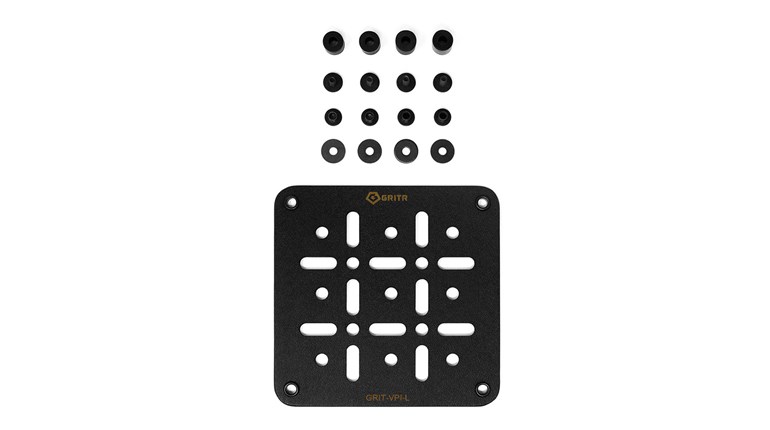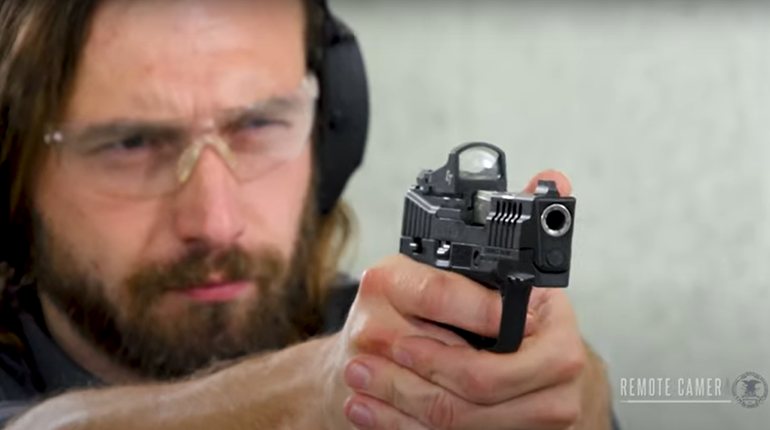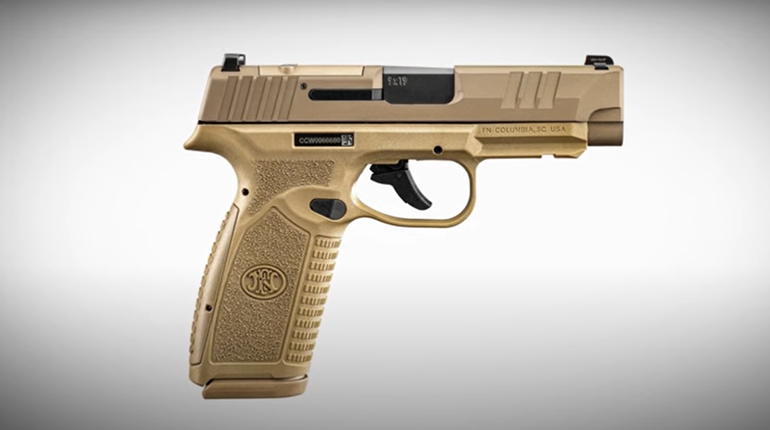
Variation is one of the things that has kept the 1911 alive and viable in the age of the striker-fired pistol. Differing frame sizes, barrel lengths, frame materials, barrel lock-up systems and chamberings allow for a great many possibilities as to what makes a 1911 ideal for a given task.
When it comes to EDC (everyday carry) 1911s, Dan Wesson has quietly been turning out some of the finest, best-thought-out, personal-protection pistols to be had anywhere. They’re not draped with a bunch of bells and whistles, but with genuinely useful, well-considered features, and the execution of those features has been generally excellent.
The new ECP is one no-nonsense 1911. Anything necessary for an EDC gun is there; anything that is not, isn’t. The lightweight pistol’s present-and-accounted-for features include an astonishingly crisp trigger; fast, tough, ledge-style sights; a grooved topstrap to break up glare on the sighting plane; a compact, but accurate 4-inch bull barrel; and a bobbed mainspring housing to reduce the gun’s printing beneath clothing.
On the other hand, the ECP dispenses with such things as front cocking serrations, a ported slide and an accessory rail. Yeah, I know we’re supposed to carry a light—and an edged weapon and a spare magazine and an IFAK, but who’re we kidding? Some days it’s all you can do to conceal the gun itself; carrying around that much kit concealed in Virginia every day in the summer just isn’t going to happen. As for the front cocking serrations, I’ve never been a fan of anything that might prompt you to put your hand near the muzzle, so I don’t miss them. In fact, their absence gives the slide a nice, clean look. As for slide porting, why create a point of entry for dirt, and why reduce weight where you most need it?

The sights are superb. My only quibble with them is that the rear unit is sharp-edged and will cut your palm if you rack the slide too hastily (don’t ask me how I know). The front post is adorned with a brass bead while the rear has a large U-notch and no dots. Not having three white dots, the sight picture was refreshing and effective. The brass bead seems to be coming back into fashion as a simple, permanent alternative to tritium. It’s adequately visible in ambient light in virtually any urban or suburban setting, and there are no radioactive lamps that will eventually lose their glow. If you like or need tritium night sights, by all means, get a set and be scrupulous about maintaining them. Some shooters fail to have theirs replaced when they dim, particularly if they’ve never had real, critical need of them. An EDC gun is a deeply personal item and only you can decide how best to allocate your resources. Having another option, though, is a good thing.
All the controls of the ECP operate perfectly: Not excessively stiffly nor too easily. You simply apply an appropriate amount of pressure and the control operates positively and quite distinctly.
If there is one feature of the ECP that merits special praise, it is the trigger. I used the description “astonishingly crisp” earlier and that may not do it justice. There is a little take-up, you begin to apply pressure and—it breaks. It just breaks. No stacking, no hitches, nothing. It feels much lighter than its measured pull weight, yet safe. Honestly, it’s the best 1911 trigger I’ve ever felt, and I don’t mean just on production guns.
The grips are handsome, well-figured G10. Of course, they offer the other benefits of good G10, too: They are lightweight, precisely fitted and provide outstanding purchase in wet or dry conditions.

I’m a big fan of the CCO configuration (a Commander-length barrel/slide and an Officer’s-size frame), but the ECP bobtail has me rethinking my position. Taking off that bottom corner of the backstrap allows the ECP to conceal just about as well as a CCO when worn at the FBI cant common to most strong-side holsters. Further, you don’t lose a round of magazine capacity.
While most Commander-style pistols have a bushing-fitted 4.25-inch barrel to preserve the original Browning geometry, the ECP’s barrel is actually a bull-contoured 4-incher that eschews a bushing. The added weight up front reduces quickness a little, but you gain steadiness and recoil attenuation.
At the range, the pistol took a couple of boxes of ammunition to break in. The nose of the first cartridge initially would press against the bottom of the feed ramp rather than angling up and onto the ramp. Also, the slide would sometimes need about a 1⁄16-inch nudge into battery on the last shot in a magazine. Both problems soon went away and the pistol was 100 percent by test’s end. With its aluminum frame and single-stack magazine, this was an easy gun to carry and, with its quick, clear sight picture and terrific trigger, a simple gun with which to shoot fast and well.
If I had to strap on a sub-$2,000, single-stack, production 1911 out of the box and wear it concealed—without modification—for the foreseeable future, this would probably be the gun.





































